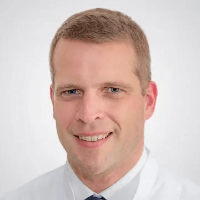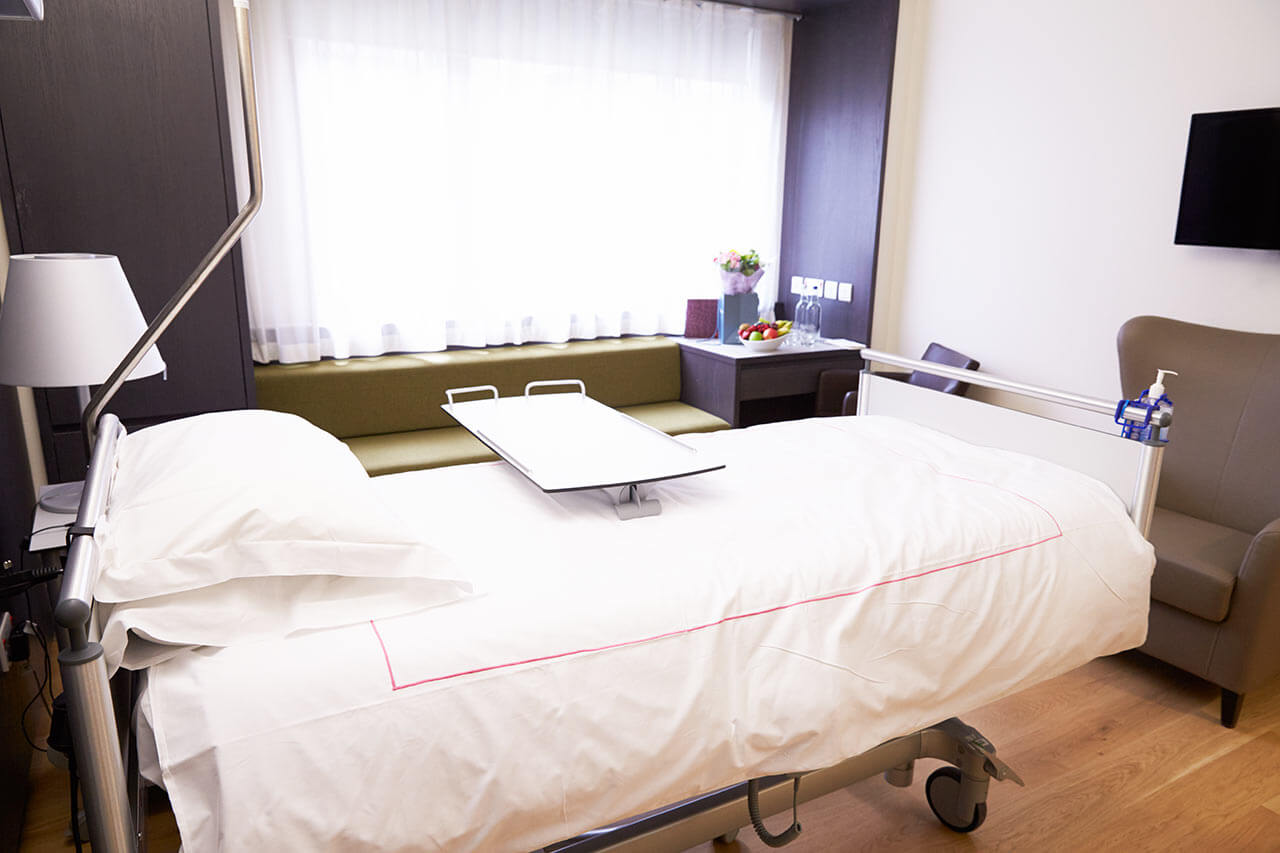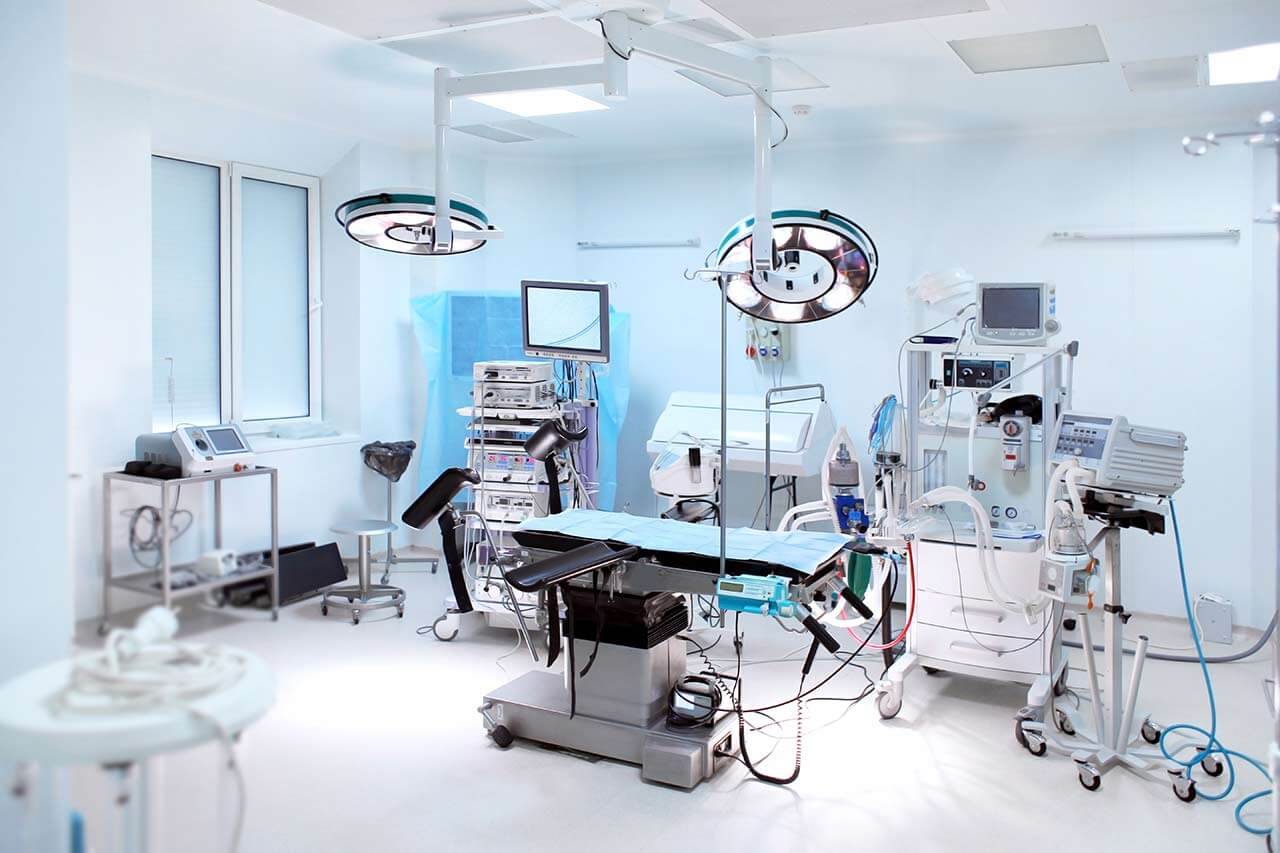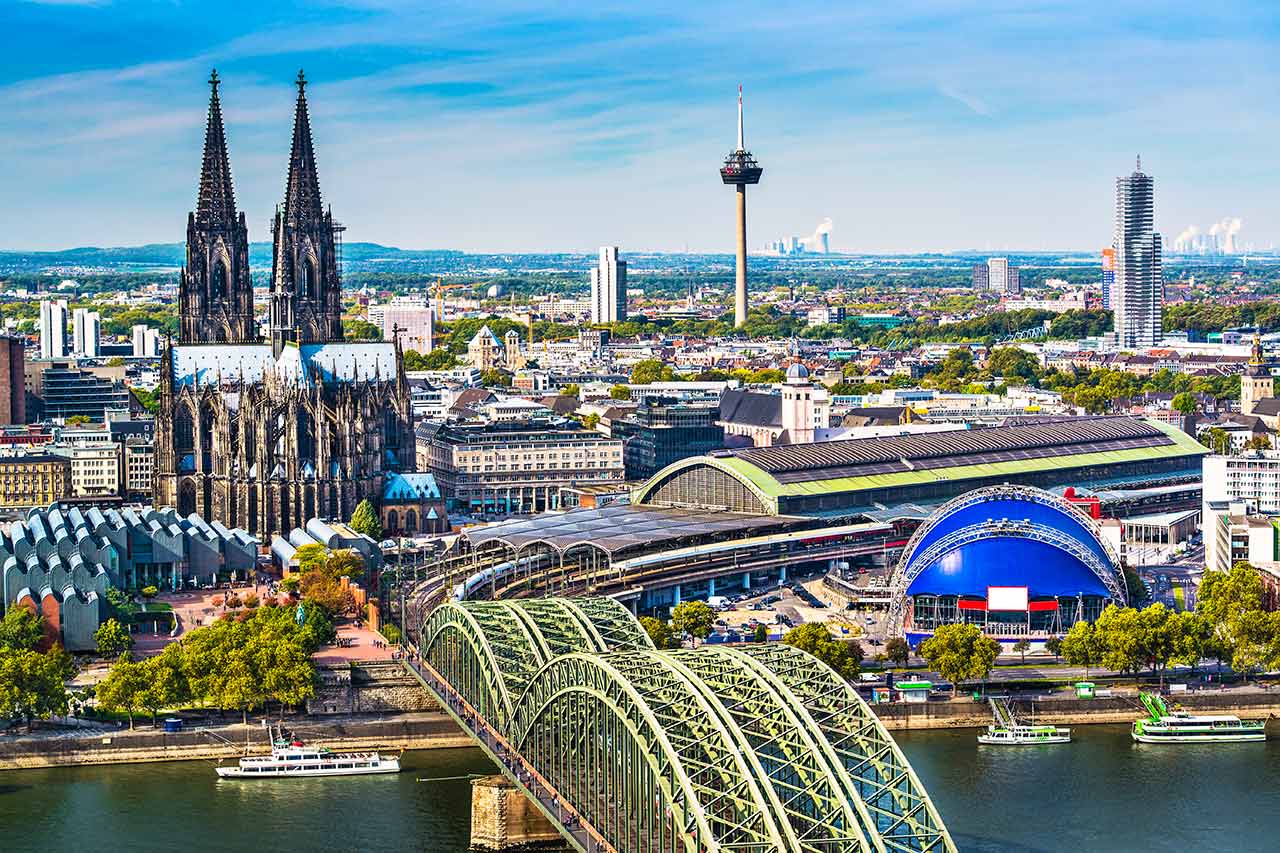
The program includes:
- Initial presentation in the clinic
- clinical history taking
- physical examination
- review of medical records
- laboratory tests:
- complete blood count
- biochemical analysis of blood
- lipid metabolism (HDL/LDL, cholesterol, triglycerides)
- kidney function tests (creatinine, urea)
- coagulation tests (aPTT, PT, INR)
- inflammation indicators (CRP, ESR)
- X-ray examination of the ankle joint
- CT/MRI scan of the ankle joint (if indicated, 650/1200 €)
- injections of ACP (3x)
- nursing services
- consultations of related specialists
- treatment by chief physician and leading experts
- explanation of individual treatment plan
- written statement
How program is carried out
During the first visit, the physician conducts a clinical examination and goes through the results of previous diagnostic procedures. After that, you will undergo the necessary additional examinations, such as the laboratory blood and urine tests, X-ray of the ankle joint, MRI or CT scan. After a comprehensive assessment of the health condition the physician will make sure that you have no contraindications and schedule the therapy.
The first stage of treatment is venous blood sampling. Your physician will draw up to 50 ml of blood from your vein and place it in a special tube. After processing (centrifugation), platelet-rich plasma will be separated and drawn in a syringe. About 3-5 ml of such plasma are required for one procedure.
The next stage of treatment is the introduction of autologous conditioned plasma into the affected joint by intra-articular injection. To distribute the drug in the joint cavity evenly, you will need to rotate, bend and straighten your foot several times.
Injections are performed with a 3-5 days interval. During this time, you will receive symptomatic therapy and stay under medical supervision. During the final consultation after the last injection, the attending physician will conduct a follow-up examination and give you detailed recommendations for further follow-up and treatment.
Required documents
- Medical records
- X-ray examination, MRI/CT scan (if available)
Service
You may also book:
 BookingHealth Price from:
BookingHealth Price from:
About the department
According to the medical Focus magazine, the Department of Shoulder Surgery and Hand Surgery at the ATOS Orthoparc Clinic Cologne is one of the best medical facilities in Germany with outstanding achievements in shoulder surgery!
The department offers a full range of conservative and surgical treatments for diseases and traumatic injuries of the shoulder joint and hand. Shoulder surgery specialists treat omarthrosis, shoulder impingement, rotator cuff ruptures, shoulder dislocations, frozen shoulder, and other pathologies. Hand surgery is represented by a qualified team of physicians whose areas of expertise include the treatment of rhizarthrosis, finger joint arthrosis, carpal tunnel syndrome, epicondylitis, Dupuytren's disease, and trigger finger. The first-line treatment is comprehensive conservative therapy using oral medications, injections, physiotherapy, and other therapeutic modalities. If a course of conservative therapy does not produce the desired results, surgery is considered. Shoulder and hand surgery is performed using minimally invasive arthroscopic techniques.
The Head Physician of the department is Prof. Dr. med. Knut Beitzel. The specialist has more than 15 years of successful clinical experience and numerous professional achievements. Prof. Beitzel worked for a long time at the University Hospital Rechts der Isar Munich, where he gained invaluable experience. He holds a top position in the ranking of experts in shoulder surgery and sports traumatology by the German medical magazine Focus. In addition, he has received a 5-star rating from the online resource Jameda based on patient reviews, the highest indicator of patient confidence.
Shoulder surgeons frequently treat patients with shoulder impingement. This pathological condition is characterized by repeated pinching of the rotator cuff and biceps tendons between the head of the humerus and the acromion of the scapula during arm movement. The main manifestation of the disease is pain: in the early stages of shoulder impingement, patients experience acute pain in the shoulder area when moving the arm, in the advanced stages, pain is also present at rest and significantly increases at night. At the diagnostic stage, when shoulder impingement is suspected, the department's physicians review the patient's medical history and perform a clinical examination and imaging tests: digital radiography, ultrasound and/or magnetic resonance imaging. As for the treatment, the department's specialists prefere conservative therapy: doctors prescribe oral medications, local injection therapy, therapeutic exercises, electrotherapy, cryotherapy, and other procedures. Surgery is performed using arthroscopic techniques through millimeter incisions and takes 30-60 minutes.
An integral part of daily clinical practice is the treatment of shoulder arthrosis (omarthrosis). This is a chronic disease in which irreversible degenerative and dystrophic processes occur in the tissues, resulting in impaired joint function. Omarthrosis causes severe pain and stiffness in the shoulder, and the range of motion of the shoulder gradually decreases to complete immobility. Without treatment, the patient is at risk of disability. The standard diagnostic protocol for suspected omarthrosis includes a clinical examination with an assessment of the shoulder joint function, digital radiography, ultrasound, and/or MRI. If the diagnosis is confirmed, the department's specialists begin to develop a treatment regimen. In the case of mild to moderate arthrosis, the department's doctors use only conservative treatment, which may include drug therapy, electrotherapy, acupuncture, local cryotherapy or heat therapy, and other methods. In case of severe damage to the cartilaginous tissues of the shoulder joint, the doctors of the department perform injection therapy with autologous plasma or hyaluronic acid. The last-line treatment is arthroplasty, in which the affected shoulder joint is partially or totally replaced with a prosthesis. The success of the surgical procedure depends largely on the professionalism of the surgeon, as shoulder replacement surgery is not a common procedure. Therefore, not every hospital has surgeons with experience in this field. The specialists of the department regularly perform shoulder replacement surgery, so they can guarantee the best results.
The department also offers a well-developed hand surgery service. Specialists in this area treat carpal tunnel syndrome, finger arthrosis, rhizarthrosis, epicondylitis, trigger finger, and Dupuytren's contracture. Of particular clinical interest to the department's medical team is the treatment of carpal tunnel syndrome. The disease occurs as a result of intramuscular, interosseous, or intertendinous entrapment of the median nerve in the wrist. Its main symptoms are numbness of the fingers, decreased sensitivity of the hand, and burning pain in the palm radiating into the fingers. As the carpal tunnel syndrome progresses, the patient may have difficulty with hand movements: holding a cell phone or a book with the affected hand, holding onto the upper handrail during transportation, and so on. During the diagnosis, the patient undergoes clinical examination, radiography and electroneuromyography. If the pathology is diagnosed in time, conservative treatment is applied, including the use of analgesics, special splints, acupuncture, ultrasound therapy, and kinesiotaping. In complex clinical situations, the department's doctors perform arthroscopic surgery called median nerve decompression.
The department's main clinical focuses include the following:
- Shoulder surgery
- Diagnostics and treatment of shoulder arthrosis (omarthrosis)
- Diagnostics and treatment of shoulder impingement
- Diagnostics and treatment of rotator cuff ruptures
- Diagnostics and treatment of shoulder dislocations
- Diagnostics and treatment of frozen shoulder
- Hand surgery
- Diagnostics and treatment of rhizarthrosis
- Diagnostics and treatment of finger joint arthrosis
- Diagnostics and treatment of carpal tunnel syndrome
- Diagnostics and treatment of epicondylitis
- Diagnostics and treatment of Dupuytren's contracture
- Diagnostics and treatment of trigger finger
- Diagnosis and treatment of other shoulder and hand diseases
The department's range of medical services includes the following:
- Conservative treatment methods
- Drug therapy with oral medications
- Local injection therapy, including autologous plasma or hyaluronic acid injections
- Therapeutic exercises
- Electrotherapy
- Cryotherapy
- Acupuncture
- Local cryotherapy and heat therapy
- Ultrasound therapy
- Kinesiotaping
- Surgical treatment methods
- Arthroscopic procedures
- Other medical services
Curriculum vitae
Higher Education and Postgraduate Training
- 1997 - 2005 Studied Human Medicine at the University of Bonn.
- 2000 - 2004 Studied Sports Medicine at the University of Bonn, Master of Sports Medicine.
- 2006 Thesis defense, University of Bonn.
- 2014 Habilitation and Venia legendi in Orthopedics and Trauma Surgery, Technical University of Munich.
Professional Career
- 2006 Assistant Physician, Department of Trauma Surgery, Oberwallis Hospital Center, Visp, Switzerland.
- 2006 - 2007 Assistant Physician, Medical Park St. Hubertus Bad Wiessee and Department of Sports Orthopedics, Technical University of Munich.
- 2007 - 2010 Assistant Physician, Department of Sports Orthopedics, University Hospital Rechts der Isar Munich.
- 2010 - 2011 Research Fellow, Department of Orthopedic Surgery, University of Connecticut Medical Center, Farmington, USA.
- 2011 - 2014 Assistant Physician, Department of Trauma Surgery and Orthopedic Surgery, BG Unfallklinik Murnau.
- 2014 - 2015 Senior Resident, Department of Sports Orthopedics, University Hospital Rechts der Isar Munich.
- 2015 - 2017 Senior Physician, Department of Sports Orthopedics, University Hospital Rechts der Isar Munich.
- 2017 - 2018 Managing Senior Physician, Department of Sports Orthopedics, University Hospital Rechts der Isar Munich.
- Since 2018 Head Physician, Department of Shoulder Surgery and Hand Surgery, ATOS Orthoparc Clinic Cologne; Research Associate, Department of Sports Orthopedics, University Hospital Rechts der Isar Munich.
- Since 2020 Extraordinary Professorship, Technical University of Munich.
Prizes, Awards, and Honors
- 2017 SPORLASTIC Poster Award, Congress of the German Olympic Sports Confederation.
- 2017 Alwin Jäger Award, Congress of the Society for Arthroscopy and Joint Surgery (AGA).
- June 2017 Young Investigator Award, Society for Orthopedic and Traumatologic Sports Medicine (GOTS).
- September 2013 AGA-Medi-Award, Congress of the Society for Arthroscopy and Joint Surgery (AGA), Wiesbaden, Germany.
- September 2012 1st Poster Award, Congress of the Society for Arthroscopy and Joint Surgery (AGA), Zurich, Switzerland.
- June 2010 Best Poster Award, Congress of the European Society of Sports Traumatology, Knee Surgery and Arthroscopy (ESSKA), Oslo, Norway.
Memberships in Professional Societies
- American Shoulder and Elbow Surgeons (ASES).
- International Society of Arthroscopy, Knee Surgery and Orthopedic Sports Medicine (ISAKOS).
- European Society of Sports Traumatology, Knee Surgery and Arthroscopy (ESSKA).
- Society for Arthroscopy and Joint Surgery (AGA).
- German Society for Shoulder and Elbow Surgery (DVSE).
- Society for Orthopedic and Traumatologic Sports Medicine (GOTS).
- German Society for Sports Medicine and Prevention (DGSP).
Photo of the doctor: (c) ATOS Orthoparc Klinik Köln
About hospital
According to the prestigious German Focus magazine, the ATOS Orthoparc Clinic Cologne is one of the best medical facilities in Germany in the field of knee, hip, and shoulder surgery, as well as in the field of foot surgery and spinal surgery!
The clinic specializes in conservative and surgical treatment of musculoskeletal pathologies of any complexity. Of particular interest to the ATOS Orthoparc Clinic Cologne are such areas of orthopedics as knee and hip arthroplasty, arthroscopic interventions on large joints, treatment of foot and hand pathologies, treatment of sports injuries, treatment of osteoporosis, and conservative and surgical treatment of spinal diseases and injuries. The clinic's daily work is based on the principle of providing high-quality medical care, taking into account the individual needs of each patient. The clinic offers modern infrastructure, state-of-the-art equipment, and highly qualified personnel. The specialists are attentive, responsive, and always ready to answer patients' questions, ensuring a comfortable stay and high-quality treatment.
Only highly effective methods are used during the therapeutic process. Conservative therapy (for example, treatment with tablets, intra-articular injections, physiotherapy, or massage) is always used as first-line treatment; the decision to perform surgery is made only when conservative methods fail. Surgical procedures are performed in high-tech operating rooms. Doctors almost always use sparing minimally invasive and arthroscopic techniques, which significantly shorten the postoperative recovery period. After knee and hip replacement surgery, patients are offered a unique Rapid Recovery program.
The ATOS Orthoparc Clinic Cologne has been successfully operating for several decades, during which time it has managed to take a leading position among orthopedic centers in the national healthcare system. The clinic's specialists regularly treat many patients from abroad, which testifies to the excellent reputation of the medical institution in the international medical arena. The clinic strictly adheres to hygiene and safety standards. The doctors are guided by the current clinical protocols and recommendations of the German Society for Orthopedics and Trauma Surgery (DGOU) and the German Society for Orthopedics and Orthopedic Surgery (DGOOC). Great importance is attached to understanding the individual needs of patients and treating them with humanity and respect.
Photo: (с) depositphotos
Accommodation in hospital
Patients rooms
The patients at the ATOS Orthoparc Clinic Cologne stay in comfortable single and double rooms decorated in bright colors. The standard patient room includes an automatically adjustable bed with an orthopedic mattress, a nightstand, a table, a chair, a telephone, and a TV. The patient rooms are also equipped with lockers for personal belongings. Each patient room has an ensuite bathroom with a shower and toilet.
The clinic has a pleasant and calm atmosphere, which contributes to the positive attitude of the patients and their rapid recovery.
Meals and Menus
The clinic offers delicious and balanced meals three times a day: breakfast, lunch, and dinner. Meals are provided by renowned international catering company SV Group with the participation of professional nutritionists.
If, for some reason, you cannot eat all the products, you will be offered an individual menu. Please inform the medical staff of your dietary preferences prior to the start of your treatment.
Further details
Standard rooms include:
![]() Toilet
Toilet
![]() Shower
Shower
![]() Wi-Fi
Wi-Fi
![]() TV
TV
Accompanying person
Your accompanying person may stay with you in your patient room or at the hotel of your choice during the inpatient program.
Hotel
You may stay at the hotel of your choice during the outpatient program. Our managers will support you for selecting the best option.




